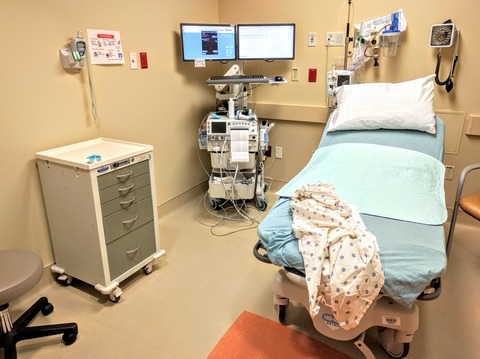
Research supports an urgent need to change the way we build, maintain and work in hospitals, and many facilities could do more to promote rest and healing while preventing stress and infection. It’s clear that evidence-based medical care will require evidence-based hospital design.
Guess who wrote this?
If you’re thinking it was Roger Ulrich, Craig Zimring, Anjali Joseph, or some other healthcare design researcher, guess again.
It was Dhruv Khullar, M.D., M.P.P., a resident physician at Massachusetts General Hospital and Harvard Medical School.
Guess when he wrote it?
Not 17 years ago, when Colin Martin interviewed Ulrich and wrote about evidence-based design in the British Journal, The Lancet. (Read my recent post about this.)
Dr. Khullar’s words appeared in a New York Times article, “Bad Design is Making Us Sicker” this past week. He pretty much laid out all the reasons why we should be paying attention to the design of the physical environment of healthcare: infections, falls, confidentiality, noise, pain, blood pressure.
Don’t We Already Know This?
Duh. These are things we’ve been talking about in the healthcare design community since 1988. Probably before.
Dr. Khullar cited some articles and research to back up his points, but he missed the 2,500+ articles and resources indexed in The Center for Health Design’s Knowledge Repository.
So, we can sit back and bemoan the fact that we already know all this. That we’ve been singing this song and dance for 29 years.
But why do we still have hospitals like the one Dr. Khullar referenced in his article that are poorly designed? Who’s fault is that? And what can we do about it?
Well, for starters, we need more physician champions like Dr. Khullar. Nurse champions, too. Because without physicians and nurses, there is no hospital.
We also need to keep pushing for more research that connects the built environment of healthcare to outcomes. And let the world know about it.
Because when it appears in the New York Times, most people take it seriously.
P.S. Please do me a favor — if you liked this post and like this blog, please share it with others by sending them the link and/or post it on your Twitter, LinkedIn, or Facebook, etc. Also, don’t forget to subscribe so you’ll get emails when new content is posted. Thanks!
If you like this post, please share.

What’s my story? I’m a healthcare and senior living design knowledge expert who writes and speaks frequently about trends and issues affecting these two industries. I’m also a strategic marketing consultant and content creator, working with companies and organizations who want to improve the quality of healthcare and senior living through the design of the physical environment. You can reach me at [email protected].


4 Responses
Perhaps one day it will change. Full and smooth cooperation is needed between knowledgeable “Facilities Stakeholders”, and experienced/knowledgeable “Designers/Architects”. From my experience, when a decision maker with a VISION (aka The President), who sits at the very top of the pyramid leads the process, there is a chance for a successful design and a useful “product”. But most of the time this scenario, regrettably is an anomaly.
When there is the tension between government, providers, payors and the patient is who ultimately paying the price (sadly more than just in monetary terms). Design may need to take a more activist role when you consider what is at stake. We spend more than any other country on healthcare and it’s a small percentage of the $2.8 Trillion going towards designing safe and progressive built environments. Health care has allowed itself to become a business model and forgotten it’s an art and science. Knowledge and sharing will drive fear as a tool for profit out of the equation and open us up to the possibilities the evidence based design can offer.
A friend sent me a copy of the NYT article – I couldn’t believe what I was reading. The even more sad truth is that the author was right – we still can be doing much better at designing more life-enhancing healthcare places than we are. Since 2017 will be the 30th annual Healthcare Facilities Symposium…we know that – in the bigger scheme of things – 30 years to completely transform an industry is not a very long time –
so, let’s stay at it, and – hopefully – improve our effectiveness over time.
Love your post and can remember you fighting many years ago at the Healthcare Symposium. I hope the day will come where they actually act on the problem.